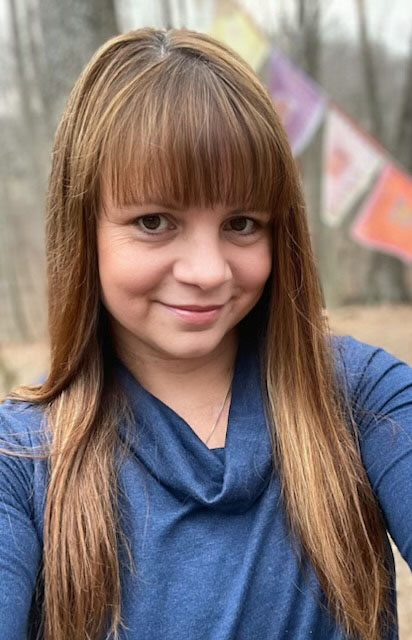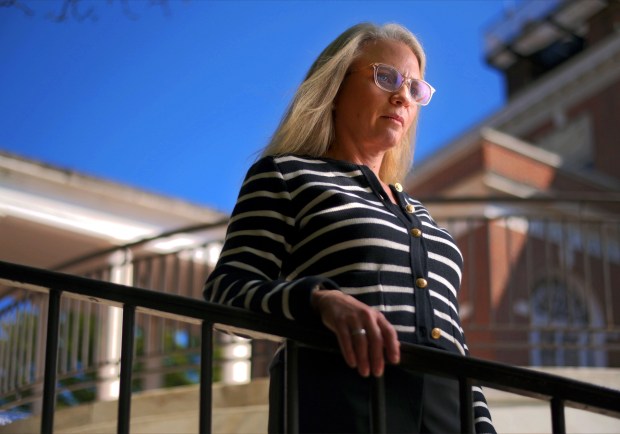Psychotherapist Kerry Hospelhorn gets up at 6 a.m. every day, sips her morning coffee and checks text messages to see which of her 20 clients need urgent mental health support. It can be one or up to 10.
All are students in Baltimore County schools; there’s always a list of teenagers who need to talk. Their fears range from school to social and family matters. And Hospelhorn, who works at Talkspace, a national digital mental health platform, will be there to listen.
“There are kids who say they want to get to know themselves better and others who have severe social anxiety and symptoms of depression. It’s a really big choice,” she said. “They say, ‘I have to speak in front of the class and I’m going to out” or “I don’t know how to talk to my parents about skipping class.” Some apply to college and fear their grades aren’t good enough.
Talkspace, which started in 2012, signed a two-year, $1.8 million contract with Baltimore County Public Schools last spring to provide free virtual mental health support to more than 32,000 high school students in Talkspace’s program through a network of licensed Maryland therapists. Each student is matched with a therapist and given a link to self-help resources, with a promise of complete confidentiality – although an emergency contact is required upon enrolment.
Other school systems in the area have also recently added virtual therapy programs and apps. This year, Baltimore City partnered with Hazel Health, a California company, to offer free telehealth services to students of all ages, with one-on-one consultations, but only from the client’s home and with parental consent.
Through Prosper, another digital health app, students in Anne Arundel County can now access their teachers, self-care tools and links to mental health resources. Frederick County has implemented Basecamp, a self-help therapy app for both middle and high school students. The program is billed as confidential, although parents of customers under 18 “can request access to their child’s data at any time.”
School systems in Carroll, Harford and Howard counties still favor in-school counseling and a crisis hotline available to all Maryland students.
It is clear that children are hurting. On September 6, a 16-year-old student shot a 15-year-old with a handgun at Joppatowne High in Harford County. On August 14, a 16-year-old student-athlete collapsed and died during football practice at Franklin High in Baltimore County.
The 2022 Youth Risk Behavior Survey of Maryland high school students, commissioned by the state health department, revealed sobering statistics. In the previous 12 months, the survey reported that 3.9% of students reported being threatened or injured by someone with a weapon (gun, knife or knife) on school grounds. During the same period, 17.9% of students had “seriously considered” attempting suicide, 14.3% had planned it, and 4.9% had actually tried to kill themselves.
Baltimore County had a higher suicide rate, with 20% of students saying they had considered it, 17.1% made plans and 5.5% tried to end their own lives.
“The data is pretty bad; it’s scary,” said Andra Broadwater, chair of the Baltimore County PTA Council’s Health and Safety Committee. What’s more, she said, many traditional mental health providers are currently overbooked and [support] is especially difficult for adolescents. Not everyone is qualified to treat children.

Hospelhorn, 51, a Harford County resident and a therapist for 27 years, the last six at Talkspace, said he doesn’t see suicidal thoughts in many teenagers. “When someone says, ‘I hate my life,’ I say, ‘Tell me more about it.’ I let them catch their breath for a second. Then we move on.”
If necessary, he also brings other therapists on board.
“Most kids don’t really want to die,” Hospelhorn said. “They’re just overwhelmed and want to feel better.”
Last spring, Baltimore County students engaged in more than 2,800 therapy sessions with doctors and exchanged 17,000 chat messages on the Talkspace app, said Patricia Mustipher, director of student support services for county schools. More than two-thirds (69%) of those who responded to the survey reported that they found the sessions useful. The data for the first quarter of the current academic year will be revealed in November.
Talkspace doctors cannot prescribe medication for students.
“If the therapist believes the teen has a larger acuity problem, such as a need for a psychiatric evaluation or possible medication, he or she would recommend additional [outside] services,” said Jeannine Feyen, director of communications at Talkspace.
Psychologists say that teenagers today feel that the ground is constantly shifting under their feet.
“We are in the midst of an adolescent mental health crisis; kids feel a lot of uncertainty that previous generations didn’t,” said Alison Papadakis, director of clinical psychological research and a professor at Johns Hopkins University. For teenagers, he said, social media, cyberbullying and the spread of artificial intelligence are creating stress in the present and fears about the future — and many teens lack the coping tools they might have acquired in the past but for school closures during COVID-19. .
“During the pandemic, our kids were isolated from their peers and their mental health went down, down, down — and we’re still climbing out of that,” Broadwater said.
“Kids missed out on personal skill development during COVID,” Papadakis said. “They carry permanent scars from that time, but may not realize it themselves.”
The pandemic limited office sessions and sparked a boom in virtual therapy, especially for teenagers who were stuck at home. Are non-traditional methods like Talkspace creating a future for high school students at this foothold?
“There is an unprecedented level of suicidal thoughts among our young people and a great deal of concern about violence in their schools,” said Nikole Benders-Hadi, chief medical officer at Talkspace. “Our goal is to connect with students before they reach a crisis [mode] and help them develop their skills.
Such platforms “definitely fill a void,” said Broadwater, who knows students who have reached out through Talkspace. “We don’t have school psychologists in every house and that’s why [guidance] counselors, mental health is just one thing they focus on – so having an app where a child can get support can only be a plus.
“When my child is in crisis, as a parent I don’t care how it happens, I just want help.”
Traditional healers suggest the need to move lightly.

“[Telehealth] is still developing, but we are moving in that direction – although we have to be careful,” said Papadakis, an expert in adolescent psychopathology. Research shows that virtual platforms help alleviate common problems such as depression and anxiety. But more serious problems like bipolar disorder and emerging schizophrenia are another matter, he said. One danger is that if telehealth doesn’t help teenagers, “they can overgeneralize and think like [all forms of] therapy doesn’t work in general or for them in particular.
People with attention-deficit/hyperactivity disorder (ADHD) also benefit from watching during videoconferencing therapy, Papadakis said:
“Kids who have trouble concentrating may not be as engaged [telehealth] treatment because they are multitasking and not paying as much attention—which [ironically] That’s why they sought therapy in the first place.
On the plus side, health apps can give therapists a glimpse into a client’s daily life, perhaps with siblings yelling or parents bickering in the background.
“It allows us to parachute into the world of patients, which you can’t get in an office visit,” he said. “Format can filter in the context we need to understand what’s going on at home.”
At the same time, peering into a tablet or cell phone can cause therapists to pick up on nonverbal signals (shaking, sighing) that are harder to read than in person. Privacy is another issue.
“There is concern [during virtual sessions] about who walks past the customer’s room or who has an ear at the door,” said Papadakis. “Sometimes therapists will have their phone rotated 360 degrees to make sure it’s safe to talk.”
Health professionals generally agree that it is easier for teenagers to trust a therapist they have never met on a virtual platform than it is for their parents.
“Personally, I would find it weird to have an intimate conversation with someone I’ve never met, but that’s less of an issue for this generation than it is for us,” Papadakis said. “I am concerned that the strategy of teenagers reaching out for help in times of crisis via text message may not be useful for learning professional tools or their own coping strategies. It may help at this point, but they have also learned [to use a crutch] instead of trying to manage difficult situations on their own.
#Talkspace #therapists #find #Baltimore #County #students #overwhelmed #feel